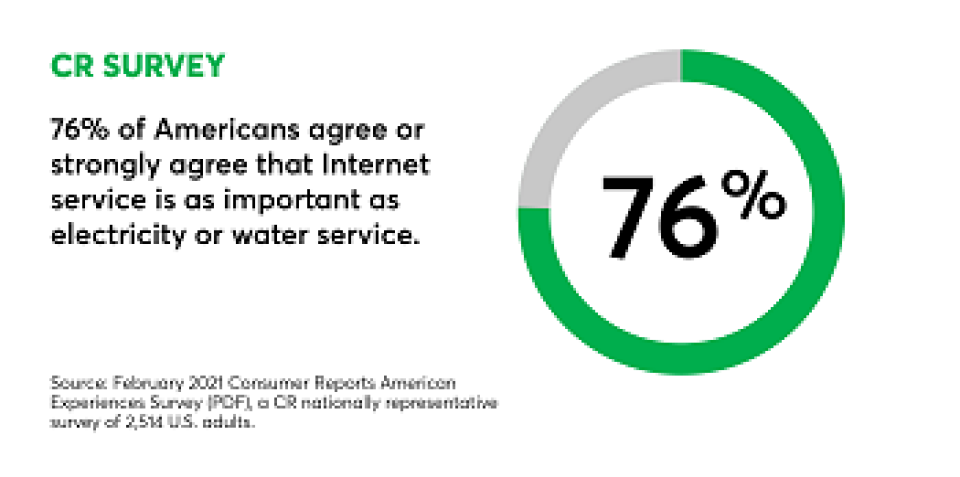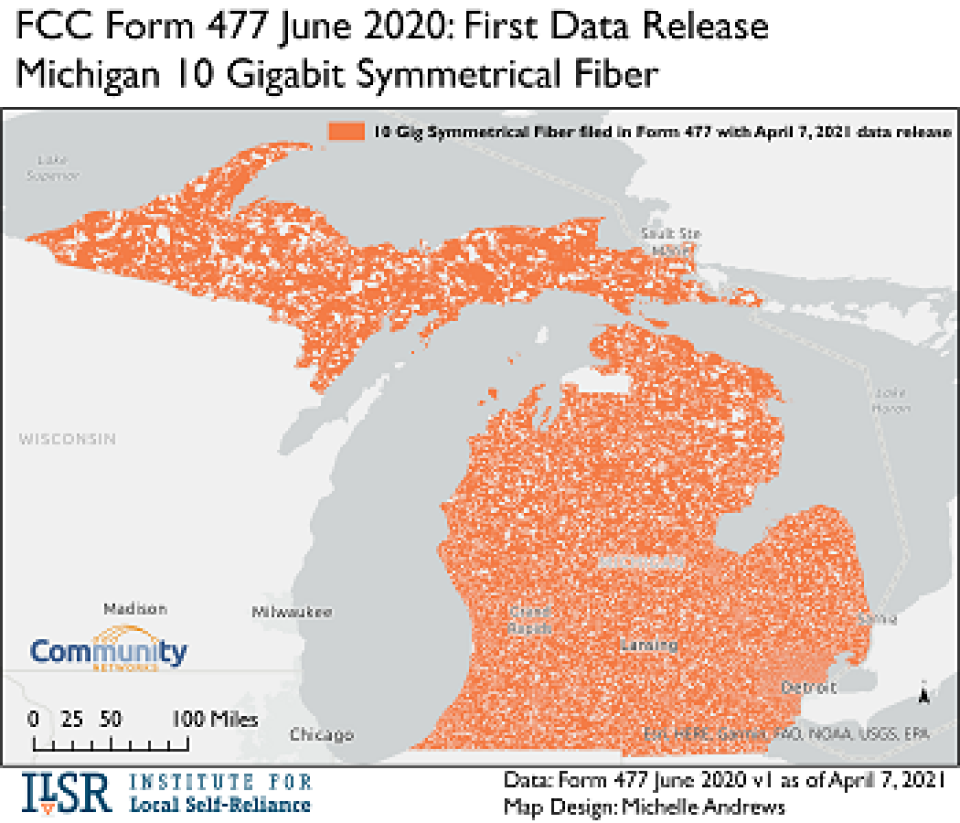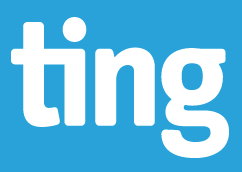
Fast, affordable Internet access for all.

A month ago we announced the launch of Let's Broadband Together, a coalition of organizations and advocacy groups led by Consumer Reports to collect as many broadband bills as possible and crowdsource the data necessary to fight the trend towards deliberately confusing, obfuscatory broadband pricing in the United States.
If you've had the intention to help out but were looking for that reminder, here it is. Head over to Let's Broadband Together and take a speed tests, submit a PDF of your bill, and answer a few questions. More submissions mean a better the dataset and more comprehensive evidence to support reform.
Click here to begin, and join Consumer Reports, ILSR, and dozens of other organizations.
In case you missed it, earlier this month President Biden signed an executive order that aims to promote competition in the U.S. economy. The order includes 72 initiatives, directing a dozen different federal agencies to promote competition in key sectors.
The White House published a fact sheet to explain what the EO aims to do. [Read the full factsheet is here]. It begins by pointing out how a "lack of competition drives up prices for consumers," which is why "families are paying higher prices for necessities—things like prescription drugs, hearing aids, and Internet service."
It goes on to say that the order will, among other things, "save Americans money on their Internet bills by banning excessive early termination fees, requiring clear disclosure of plan costs to facilitate comparison shopping, and ending landlord exclusivity arrangements that stick tenants with only a single Internet option."
As you might imagine, we are particularly interested in the section on “Internet Service,” which you can read below:
Internet Service
The Order tackles four issues that limit competition, raise prices, and reduce choices for Internet service.
In the Order, the President encourages the FCC to:
• Prevent ISPs from making deals with landlords that limit tenants’ choices.
Internet access in the United States is among the most expensive in the world, both in terms of absolute prices and in cost-per-megabit. Millions of families around the country can't afford to get online, making them even more disconnected from social services, family, and friends, more economically vulnerable, increasingly bearing the burden of the homework gap, and less healthy.
All of this is a direct result of the broken broadband marketplace, dominated by just a few monopoly providers regularly raising prices to extract wealth from communities. It's also the result of an FCC which has consistently refused to mandate the submission of pricing data from Internet Service Providers (ISPs), or collect it from users themselves. Instead of investing in infrastructure upgrades or innovating, huge providers like Charter Spectrum, AT&T, Comcast, and Suddenlink have sunk time and energy into making our broadband bills harder to interpret, all while raising prices, changing plan terms, and playing around with data caps to pad their profits.

Let's change that, together.
The Institute for Local Self-Reliance is joining with Consumer Reports to collect bills from 30,000 households across diverse geographic and demographic backgrounds in an initiative called Let's Broadband Together.
Welcome to In Our View, a new series here at MuniNetworks. From time to time, we'll use this space to explore new ideas and share our thoughts on recent events playing out across the digital landscape, as well as take the opportunity to draw attention to important but neglected broadband-related issues.
Special thank you to ILSR Data and Visualization Researcher Michelle Andrews for noticing the Michigan discrepancy, and for her contributions to this piece.
Earlier this month, the Federal Communication Commission (FCC) released updated Form 477 data, the primary source of information used for the FCC’s broadband coverage maps and the basis upon which federal agencies and states make major funding decisions.
With new interim leadership from FCC Chair Jessica Rosenworcel – who has been well-aware of the FCC’s dubious track record of publishing imprecise, insufficient, and often inaccurate broadband coverage data – you will be disappointed if you were expecting any improvements in the newest data set.
Filers had until March 26, 2021 to make revisions to data that was submitted by September 1, 2020 for service they provided as of June 30, 2020. When the updated data was first released on April 7, it indicated that nearly the entire state of Michigan had access to 10 Gbps (Gigabit per second) broadband, thanks to Form 477 data provided by Strategic Alliance CDC (see map below, or a high-resolution version here).
Historical Error Repeats Itself

Snapshot
Colorado House passes bill that reduces broadband board membership and conceals mapping data
Michigan legislature approves bill granting ISPs property tax exemptions
New Mexico and Virginia bills await governors’ action
The State Scene
Tennessee
Tennessee is home to some of the most creative local solutions to bridging the digital divide. Municipal fiber networks across the state, including Chattanooga’s EPB Fiber network, Morristown’s FiberNet, and Bristol’s network, have been a boon to economic development, job creation, educational initiatives, and overall quality of life in the past decade.
The next city to potentially join the ranks of providing municipal broadband in Tennessee is Knoxville. On March 11, the Knoxville Utility Board approved a business plan to provide Internet services across its service area.
Despite the widespread success of municipal networks across Tennessee, the state restricts what populations they can serve. Although Tennessee law allows cities and towns to offer advanced telecommunications services if they have a municipal electric utility, the networks are not permitted to offer those services to residents who live outside of the utility’s service area. Removing these restrictions would permit substantial fiber expansion to connect more residents at no cost to the state or taxpayers.
Welcome to In Our View, the first installment of a new series here. From time to time, we'll use this space to explore new ideas and share our thoughts on recent events playing out across the digital landscape, as well as take the opportunity to draw attention to important but neglected broadband-related issues.
The disaster in Texas resulting from an electric grid that was deliberately left exposed and likely to fail in rare cold weather events has received a lot of dramatic coverage, as well it should given the loss of life and damage to so many homes and businesses. It also raised some questions in my mind regarding competition and designing markets that will be discussed below. Texas was a leader in allowing different electricity firms to compete in selling electricity over the same electric grid, an arrangement that has some similarities to open access broadband approaches.
In digging into that recent electricity history, I made another interesting and relevant finding that I discuss first as part of the background to understand the lessons from Texas. In 20 years of competing models between, on the one hand, municipal and cooperative structures to deliver electricity and, on the other hand, a largely deregulated and competitive market, the munis and co-ops delivered lower prices to ratepayers.
Many of the sources used in this article are behind paywalls. We wish that weren't the case but we support both paying for news and the libraries that have databases that may allow you to track this down if you have the inclination.
Electricity Deregulation, Texas Style
More than 20 years ago, Texas largely deregulated electricity markets. Residents still have a monopoly in charge of the physical wire delivering electricity to the home, but they could choose among various electricity providers that would effectively use the wire and charge different amounts, differentiating themselves via a variety of factors, including how the electricty was produced.
July has seen the release of two complementary reports which shed light on two of the topics we care about a great deal around these parts: availability and affordability of Internet access, and municipally-enabled networks.
The Open Technology Institute at New America recently released “The Cost of Connectivity 2020” [pdf], which digs into the factors (some of which are explicit and others hidden) dictating how much Americans can expect to spend for Internet access in comparison to Europe, Asia, Canada, and Mexico. They conclude that, compared to the rest of the world, a lack of competition, regulation, and accurate data collection by the FCC has led to higher prices, slower speeds, exorbitant data cap fees, and deep digital divides running between those with high-speed access and those in Black, Indigenous, and People of Color (BIPOC) communities and low-income parts of American cities. And among its most compelling policy recommendations — based on data points from 296 standalone Internet plans in the United States — is that municipal networks offer a solution.
If OTI’s report outlines the deep and persistent problem of connectivity in the United States, US Ignite and Altman Solon’s “Broadband Models for Unserved and Underserved Communities” [pdf] provides a clear and thoughtful roadmap for local communities who ask “What can we do?” Above all else, the guide shows that high-speed broadband is a solvable proposition, and sketches out five models for local governments to follow according to their unique conditions. Like the OTI report, US Ignite and Altman Solon highlight the many inherent benefits of community-enabled networks.
Download the full reports at the bottom of this post.
Digging into the Data

In the most recent report from the Blandin Foundation, Researcher Bill Coleman from Community Technology Advisors and his crew put boots to the ground to examine the results of Connect America Fund (CAF II) investments. Bill recently visited our office in Minneapolis to discuss the report with Christopher for episode 318 of the podcast.
You can download the report, Impact of CAF II-funded Networks: Lessons From Two Rural Minnesota Exchanges here.
Bill and Christopher discuss the challenges Bill and his team encountered when they initially decided to gather documentation on what services CAF II funded projects brought to rural Minnesota. In order to get past those challenges, the researchers devised a methodology that other communities can reproduce.
Once the team had answered the technical questions about infrastructure, they analyzed the results and applied them to Minnesota’s statewide goals for broadband access. They determined that, in addition to lack of transparency regarding CAF II network plans, the tendency to invest in slower speeds, including DSL, will not help Minnesota achieve its goals.
For people living in urban areas who have grown accustomed to broadband within reach, it’s hard to imagine the situation in rural Minnesota, where there are still homes that have no access to the Internet at all. The disparity in speeds and availability complicate the idea that rural folks should have access to high-quality connectivity at the same levels as people living in urban centers.
This show is 35 minutes long and can be played on this page or via Apple Podcasts or the tool of your choice using this feed.
Transcript below.
We want your feedback and suggestions for the show-please e-mail us or leave a comment below.
Listen to other episodes here or view all episodes in our index. See other podcasts from the Institute for Local Self-Reliance here.
Thanks to Arne Huseby for the music. The song is Warm Duck Shuffle and is licensed under a Creative Commons Attribution (3.0) license.
The city of Ammon, Idaho, has used its open access publicly owned network to create an environment that encourages competition for residents and businesses. In addition to giving them control over which services they use and which companies they patronize, the city is doing its best to share information. In this video, the Ammon Fiber Optic Utility explains information financing for those who decide to connect to the network.
Ammon is using a Local Improvement District (LID) approach to connect premises to the infrastructure. The city determines the boundaries of where the project will occur and property owners have the opportunity at the beginning of the process to pay for connecting to the network by attaching the cost over 20 years to their property. If property owners don’t take advantage of the opportunity during this window of time and decide later to connect, they must pay the estimated $3,000 - $5,000 out of pocket.
As the video explains, connecting one’s property to the network raises its value and makes it easier to sell. It also points out that the cost of connecting stays with the property, so if a homeowner moves before the 20-year period is over, the new owners continue the payments for connecting. The video also explains an estimated monthly cost breakdown for hooking up to Ammon’s network.
Keeping the community informed about their options keeps residents and businesses engaged in the process and aware of developments related to their network. Check out this short video about the LID #2 options and learn more from this report from Harvard University’s Digital Access to Scholarship at Harvard (DASH).
And then there were three. After months of review and vetting, the field of bidders to purchase Burlington, Vermont’s, treasured municipal network is now a manageable number. On September 20th, city officials announced which entities were still in the running and released details of their proposals.
Ting
Toronto company Ting, which is owned by Tucows, submitted a bid to purchase the network. The company is already providing services in Charlottesville, Virginia; Holly Springs, North Carolina; and in Westminster, Maryland, where the public-private partnership has received several awards. The company is also planning construction in Sandpoint, Idaho, and Centennial, Colorado, where they will also be partnering with the municipalities to use publicly owned fiber.
They describe the key points of their offer as $27.5 million in cash and they will pay the city an additional $500,000 if BT earns $4.25 million earnings before interest, tax, depreciation, and amortization (EBITDA) during the 2018 fiscal year. Ting is offering the city a minority interest in the network that they can later divest if they choose.
 Ting will also relocate BT’s equipment, currently housed in the city’s Memorial Auditorium. The move is estimated to cost $800,000. As part of the deal, the company will also donate $250,000 toward the city’s Burlington Ignite and other programs to encourage entrepreneurship and closing the digital divide.
Ting will also relocate BT’s equipment, currently housed in the city’s Memorial Auditorium. The move is estimated to cost $800,000. As part of the deal, the company will also donate $250,000 toward the city’s Burlington Ignite and other programs to encourage entrepreneurship and closing the digital divide.
In their offer, Ting guarantees expansion within the city and beyond the city limits. Like the other bidders, Ting plans to keep the current operational team in place. They also guarantee customer rates for 30 months.
Review the details of the Ting/Tucows offer here.
Schurz